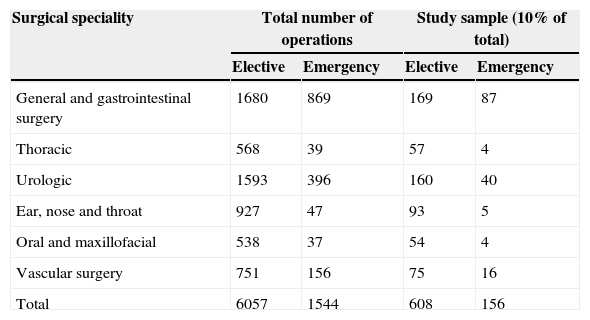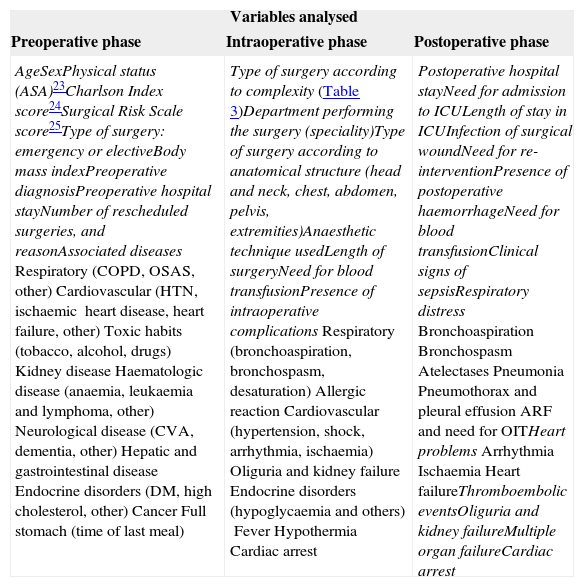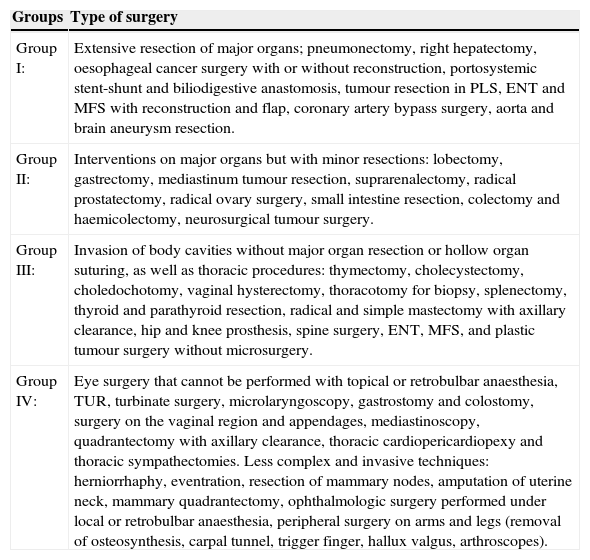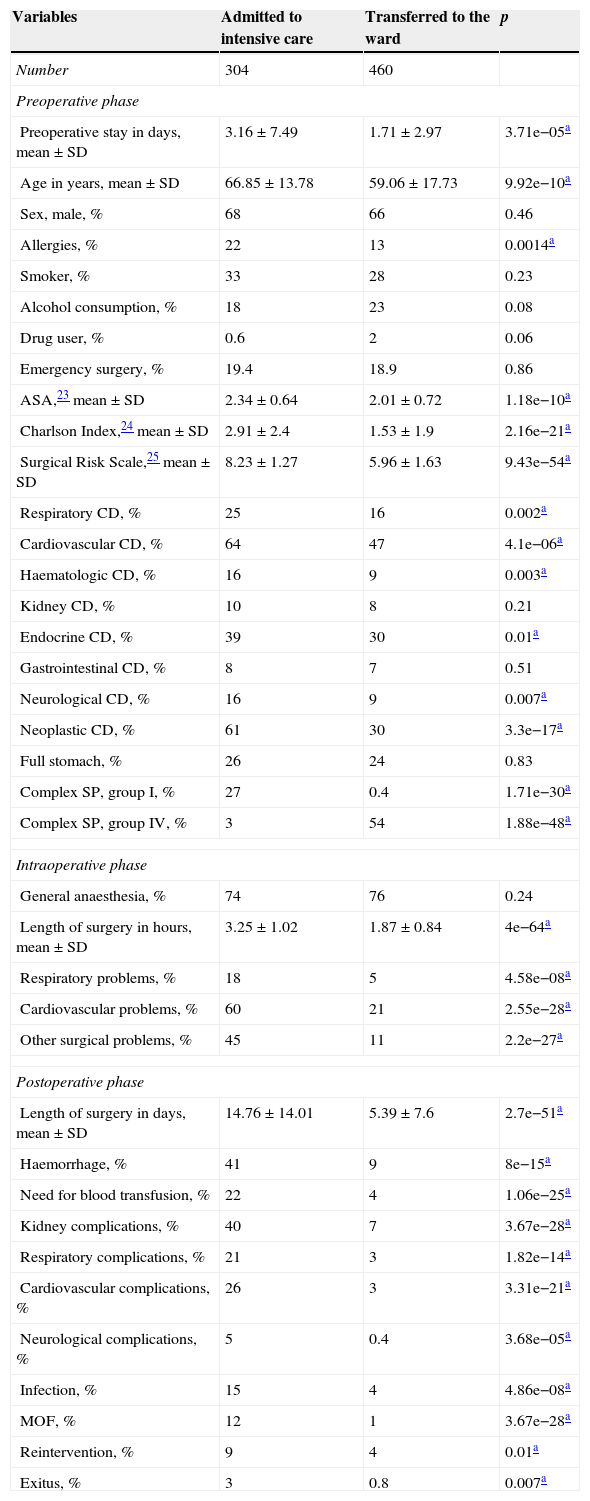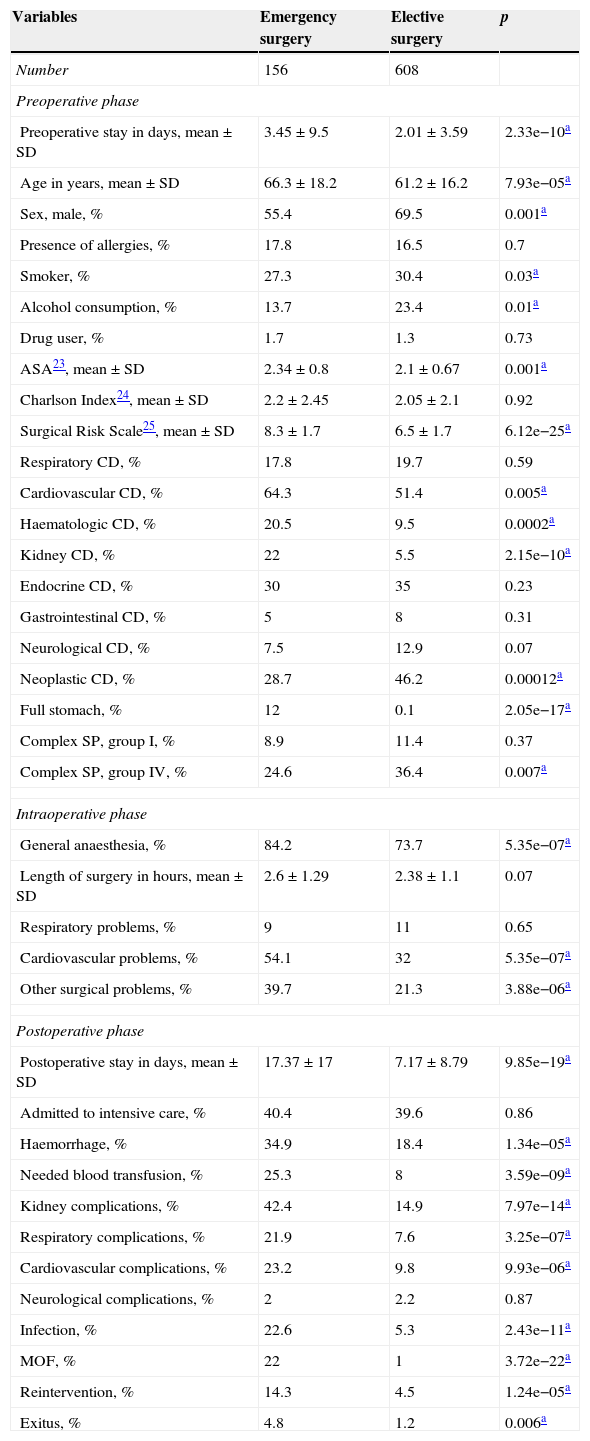Assess what factors determine the income of surgical patients in critical care unit after surgery.
Materials and methodsIt included a survey of the 10% of all patients operated by the services of General Surgery, Thoracic Surgery, Maxillofacial Surgery, Vascular Surgery, Urology and Otolaryngology during 2012. We performed a prospective, observational study. Pre-, intra-, and post-operative variables were analysed. Comparisons were made between patients operated under elective and emergency surgery, and between patients admitted in critical care and admitted directly in the ward, using ¿2 of Pearson correlation with a confidence interval of 95%.
ResultsSeven hundred and sixty-four patients were included into the study, 304 were admitted in critical care after surgery and 460 were admitted in the ward. The medical history showed a statistically significant association with intensive care unit admission, well as the fact of being labelled with a high risk for the risk scales. Complexity and duration of the surgery showed a statistically significant association with intensive care unit admission, as well as the fact of present intra-operative complications. Emergency surgery was not significantly associated with intensive care unit admission of surgical patients, although these patients had significantly higher numbers of intra- and post-operative complications, and more exitus than those undergoing elective surgery.
ConclusionsA greater incidence of intensive care unit admission of patients undergoing emergency surgery should significantly reduce morbimortality rate. The existence of specific protocols for intensive care unit admission for urgent surgery, and greater availability of beds could be useful in this regard.
Valorar qué factores determinan el ingreso de los pacientes quirúrgicos en una unidad de críticos tras la cirugía.
Material y métodosSe incluyó un censo del 10% de todos los pacientes intervenidos por los servicios de Cirugía General, Cirugía Torácica, Cirugía Maxilofacial, Cirugía Vascular, Urología y Otorrinolaringología durante el año 2012. Se realizó un estudio prospectivo, observacional. Se analizaron variables preoperatorias, intraoperatorias y posoperatorias. Se compararon aquellos pacientes ingresados en críticos con los ingresados en planta, y los intervenidos de urgencia con los programados, mediante la ¿2 de Pearson con un intervalo de confianza del 95%.
ResultadosSe introdujeron en el estudio 764 pacientes, siendo ingresados 304 en críticos tras la cirugía y 460 en planta. Los antecedentes patológicos mostraron asociación estadísticamente significativa con el ingreso de los pacientes en críticos, así como el ser marcado con alto riesgo por las escalas de predicción de riesgo quirúrgico. La complejidad y duración de la cirugía mostraron una asociación estadísticamente significativa con el ingreso en críticos, así como el presentar complicaciones intraoperatorias. La cirugía de urgencia no se asoció significativamente con el ingreso en críticos de los pacientes quirúrgicos, aunque estos pacientes sí presentaron significativamente mayor número de complicaciones intraoperatorias y posoperatorias, y más exitus que los sometidos a cirugía programada.
ConclusionesUn mayor índice de ingreso en críticos de los pacientes intervenidos de urgencia se presume disminuiría la morbimortalidad quirúrgica. Protocolos específicos de ingreso para cirugía de urgencia y una mayor disponibilidad de camas podrían ser útiles en este sentido.





